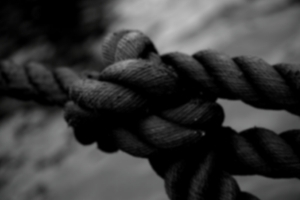This post was submitted to Love & Autism by acclaimed autistic author Sally J. Pla
An #actuallyautistic Story
When I was eight or nine, I saw a production of The Nutcracker on television, and fell in love with the idea of ballet. I pirouetted around the house night and day, with dreams of pink slippers in my head, until finally my mother signed me up for dance lessons.
According to a recent Child Mind Institute study, upwards of 30% of children develop some sort of anxiety disorder before age 18. And 80% of those anxious kids won’t receive formal treatment.
The day of the first lesson, we had to drive quite far, farther than I realized the trip would be, because the studio was in an unfamiliar town.
Woop. A tiny anxiety flare went off, somewhere between my stomach and chest.
We found the address — a big, imposing building — and went inside. It smelled strange, like floor polish and rubber.
Were we in the right place?
Woop, woop. More anxiety flares.
We walked down a crowded hallway. Everyone seemed to know where they were going. Except us.
Then my worrying really ratcheted up. In fact, it bloomed into a giant Fear Monster inside my head.
Which door was the class behind? Would we find it? What was going to happen? Would my mother leave me alone there? Would she remember where to find me when she came back to pick me up? Would it be scary? Would the teacher be mean? Would I get lost? What if I had to use the bathroom? I can’t dance! What ever made me think I could dance? I’m going to be no good at this, no good at this at all —
Woop! Woop! Woop! Red Alert!
My hand, clutched tightly in my mother’s, grew slick with sweat. My throat was suddenly lined with cotton.
“Here it is!” my mother said, oblivious and cheerful, throwing open a door.
Inside, a sea of little girls’ faces all turned and stared. Loud music blared. Lights glared.
There was nothing in the world I wanted more than to enter that room. But I was frozen solid. My body and brain had become a total, silent, screaming, red-alert zone. The Fear Monster had me paralyzed in its deadly grip. I could not make a single muscle move.
My mother had to physically pry my fingers off the doorframe so she could take me home in shame. She was very upset with me. But not as upset as I was with myself.
I felt like a total failure. Actually, I was a kid with undiagnosed autism, sensory processing disorder and generalized anxiety.
It was a different time, and people didn’t understand these things the way they do today. But I wish I’d known, and that my family had known. Knowledge is power, and knowing the enemy you’re fighting — knowing the face of your Fear Monster — is a big part of the battle in life.
According to a recent Child Mind Institute study, upwards of 30% of children develop some sort of anxiety disorder before age 18. And 80% of those anxious kids won’t receive formal treatment.
It’s hard work to fight through anxiety — really hard work. It takes medal-worthy courage to face life’s challenges when you’re in the throes of that physical fight-flight-or-freeze duress.
So, because I have lived a lifetime of worrying, and survived this long to tell the tale, here are some takeaways, some things I’ve learned about kids and anxiety, just in case you have some of that going on in your life, too.
Sympathize and listen. Sometimes we don’t need all our problems solved. We just need a hug. For instance: What if I could have told my mom how I was feeling, and she could have responded: “Oh, honey. That must have been so hard. I’m sorry.” I would have felt heard and respected, instead of like a failure.
Recognize the woops. When ‘red-alerts’ show up, or whatever physical anxiety symptoms most bother your child, remind them to take a breather, a moment to settle their physical body. To breathe in deeply. To visualize “calm.”
Be patient. Baby steps. A friend once told me about her son who was too frightened to take ski lessons. She said that was fine; they’d just watch from the sidelines, and she promised not to let go of his hand. They spent three lessons like that, silently holding hands and watching. Then, her son suddenly up and skied off to join the line-up. He just needed to take it slow, get used to the idea — and she was patient and loving enough to offer that.
Alternatively, sometimes kids are perfectly happy with reduced levels of involvement. They’re happy to cheer from the sidelines. That’s fine. Make sure you’re honoring their needs, not yours. But make sure they are moving forward and making progress — not retreating or giving up, or letting their Fear Monsters win.
It’s hard work to fight through anxiety — really hard work.
It takes medal-worthy courage to face life’s challenges when you’re in the throes of that physical fight-flight-or-freeze duress. We need to respect and support these kids, and look up to them, because I think they are actually among our bravest. They are sensitive, finely-tuned kids who are fighting valiantly to be out in the world, doing things. Let’s help them make all the gains and garner all the wins they can.
Because in my long experience, Fear Monsters can be tamed into submission. It all starts with a little extra understanding.
###
Sally J. Pla is an award-winning children’s author whose books include The Someday Birds, Stanley Will Probably Be Fine, and Benji, The Bad Day, & Me. She lives in San Diego with her family.

